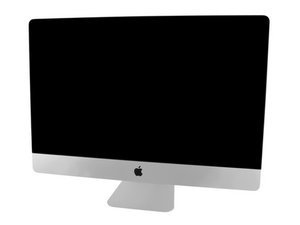No Title (You should edit this question)
I've maintained an entire major university of computers including a mainframe running Unix not Linux (not that impressive since nobody had laptops in that day and routers were hideously expensive). I worked on a NeXT box at the time (which I had to hack into bc the previous guy quit). I’m a silverback.
My main advice to anyone is to keep things as simple and OEM as possible. Complexity is your enemy… keep it simple.
Sorry this message was meant to come after the next messages... strange comment section programming...
Alex, I highly recommend AVOIDING external drives as system disks. They're fine for data, but I would not use them for the system. TB3 is crazy fast and theoretically close to internal speeds, but there's always an overhead with any external bus, and you're increasing the number of fail points by using an external drive.
As you probably already know, Apple uses a proprietary blade pinout in their NVMe SSDs. OEM blade SSDs for the iMac are rare and accordingly expensive. And of course not under warrantee. I ended up paying more for a compatible 1TB blade drive than I would have if I had bought it preinstalled from Apple. And the drive created sleep problems that were thankfully cured with the Mojave system. Bottom line is I regretted trying to save money on the internal drive, although everything is working fine now. My advice would be to go ahead and spec the largest internal SSD you can afford, but not the 256GB. It filled quickly for me, and I had to resort to all sorts of stupid tricks such as symbolic links (like an alias but system-level) to use an external SSD for apps and the home folder. It made my system more complex and fragile and frankly a headache.
I eventually bought the 1TB Polaris blade SSD for about $300 more than I would have paid if I had specced a 1TB internal SSD at the Apple store. And the original 256GB blade is sitting in a drawer because nobody has made a decent external enclosure for the Apple pinout (last time I checked OWC was the only choice and their solution didn't work).
So go ahead and spec the largest internal SSD you can afford – I personally recommend 1TB, but I create illustrations and animations for a living now so HD space is always at a premium.If you go for a fusion drive you should know that it is basically a RAID 0 arrangement and as such it's not as secure or as fast as a single blade drive. Fusion drives are basically a strange cul-de-sac in the evolution of computer media; in other words, a kludge. I would recommend against it. If you do go that way you will have the cable needed for the additional SSD and will only need an SSD adapter. But I would not go that way. You will be wasting money and warranty.
The cable you picked looks right to me... I would get a guarantee from the seller that this will work. I personally went on eBay and found a genuine used Apple part. It cost more (like $35 or something) but to buy anything other than Apple parts is false economy in the scheme of things. The single most important thing with your computer is your data: don't skimp on your data!
Soooo final advice: buy the largest internal SSD you can afford 512GB or above. Buy the Newertech adapter. Buy an original Apple cable. Buy a Samsung SSD (I bought the Pro version but I read that there is little difference in terms of service hours or reliability. I always go pro with data though). Buy an Olfa knife and extrude it just under 1/4" to cut the tape – no need for those wheel things. Just go gently (the Olfa cutter will be a valuable tool afterward). Buy a yoga block to stick under the screen to keep it tilted up, or maybe even just fold some cardboard. Buy a tape kit. Do the operation in a well-lit generous space, like a kitchen table. Cover the table with a bedspread or some other thick cloth that will catch and keep those tiny screws.
And enjoy the process and the engineering! I think working on the iMac is pretty fun and not too stressful if you take it easy and enjoy it – you'll be gutting it pretty much completely which I'm sure you'll enjoy ;D. Oh make sure you have a Torx bit that is large-ish, like T25 Im thinking. There's one Torx bolt along the way that is larger than most computer kits include. iFixIt has the spec (and the best guide of course).
Best to you my friend!
Esta é uma boa pergunta?

 2
2